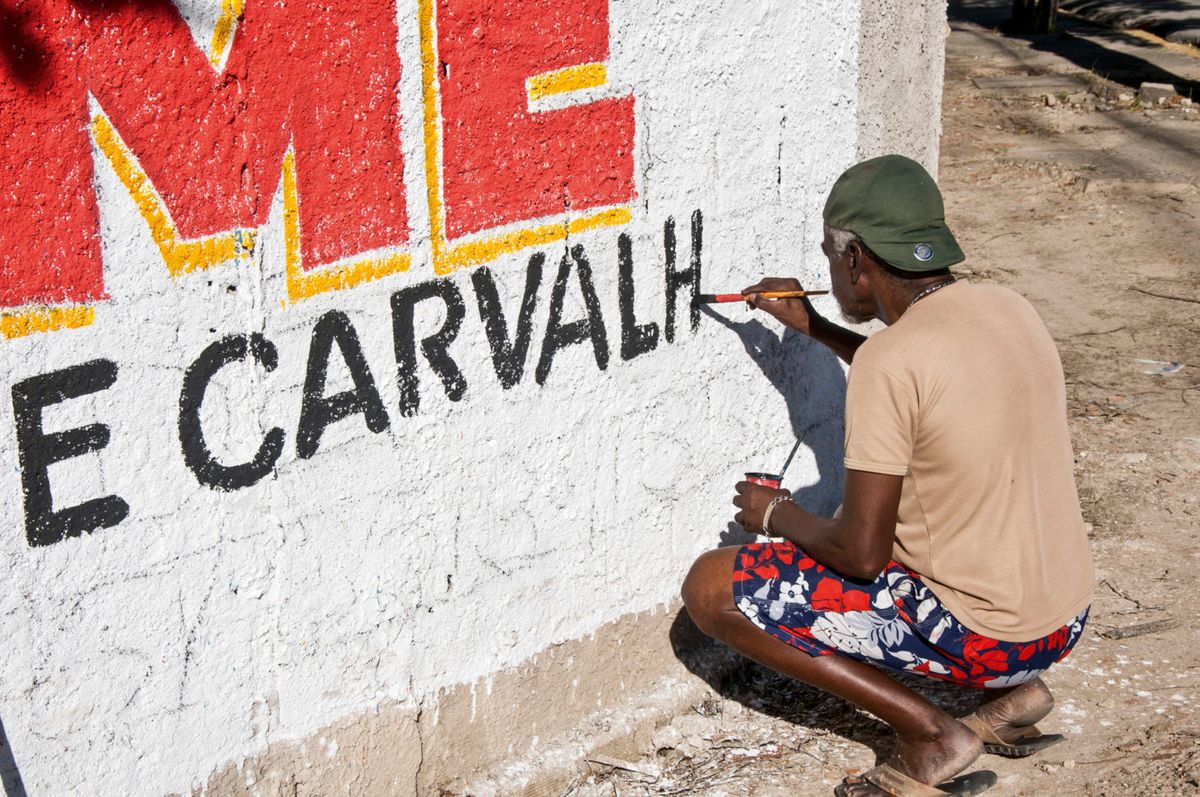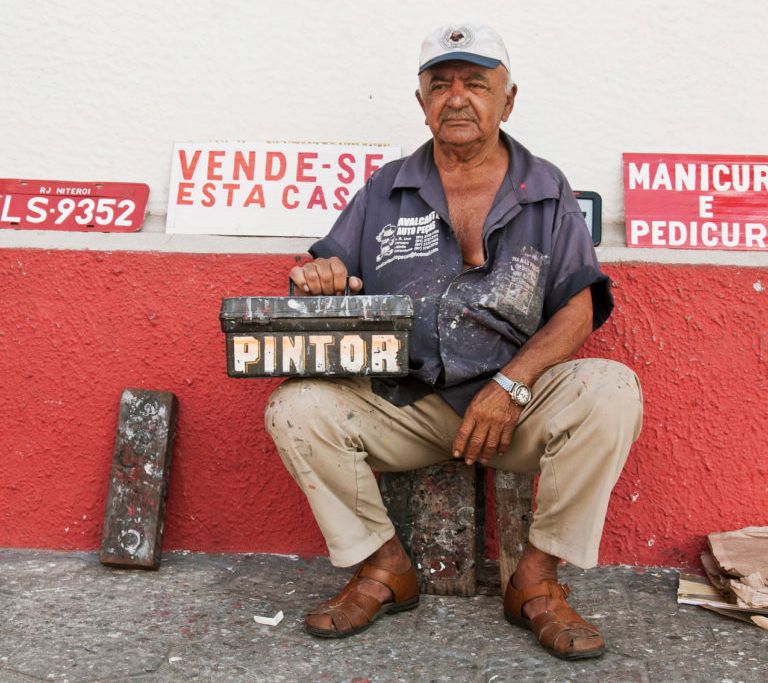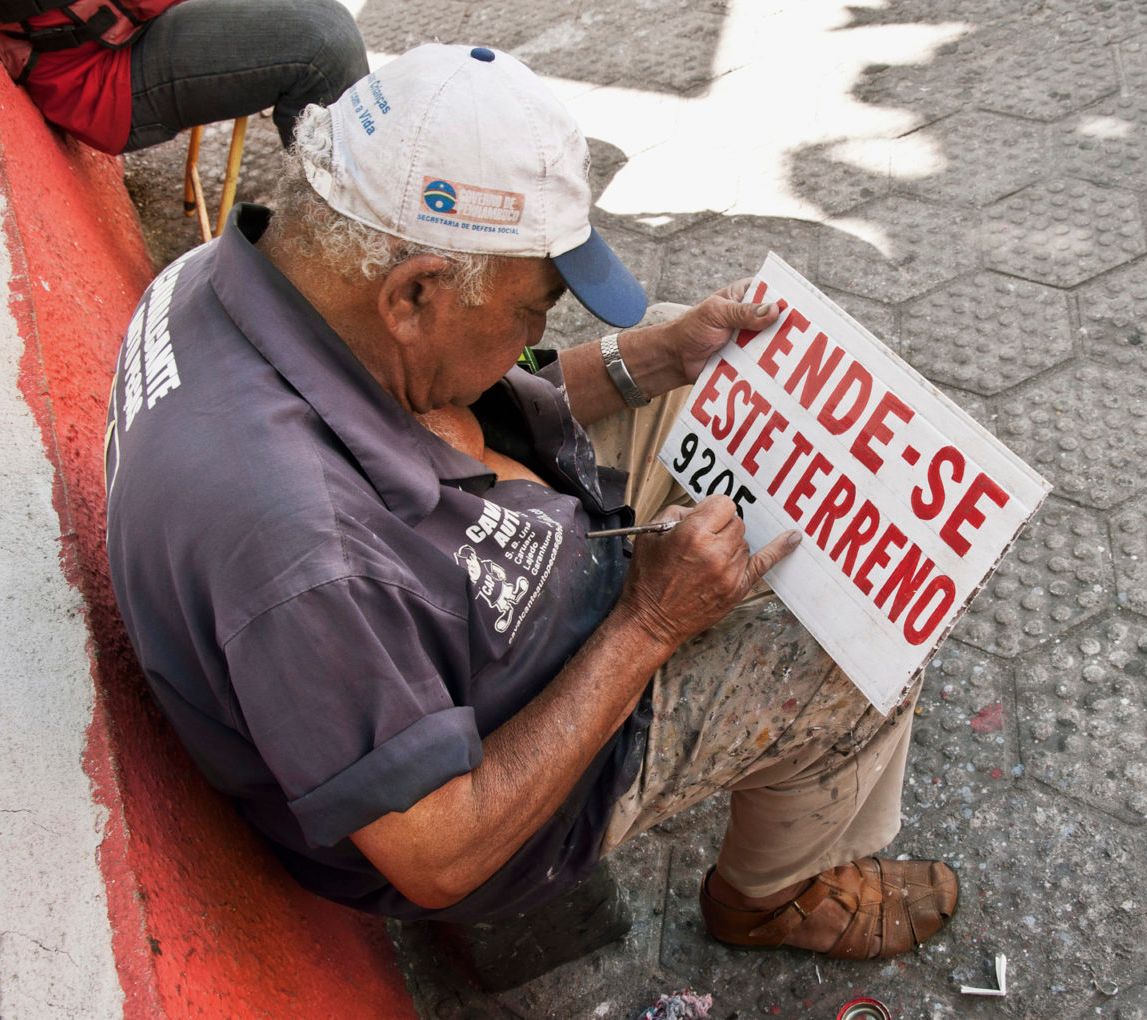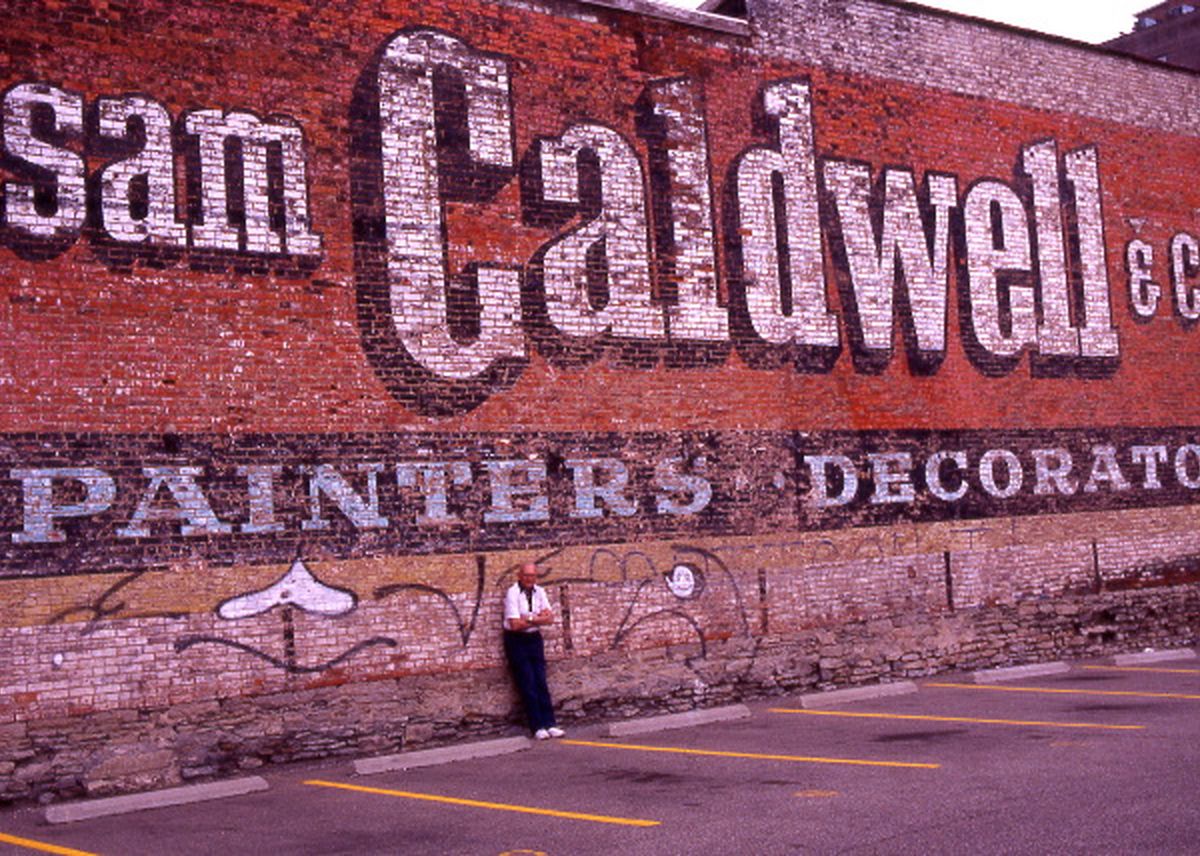|
In 2013, I did a book swap with Fátima Finizola in Brazil: I sent her a copy of Hand-Painted Signs of Kratie and, in return, she sent me a signed copy of Abridores de Letras de Pernambuco [Sign Painters of Pernambuco].
Ten years later, Fátima has written the following piece about her research journey, including her reflections on book's impact and the changes she's observed in the realm of sign painting since it was published.
Sign Painters of Pernambuco — Ten Years Later
By Fátima Finizola
Pernambuco is a state located in the north-east of Brazil, with its capital, Recife, bathed by the Atlantic Ocean on the east coast. Like most urban centres in Brazil, hand-painted signs make a rich contribution to the visual landscape of Pernambuco's most populous cities.
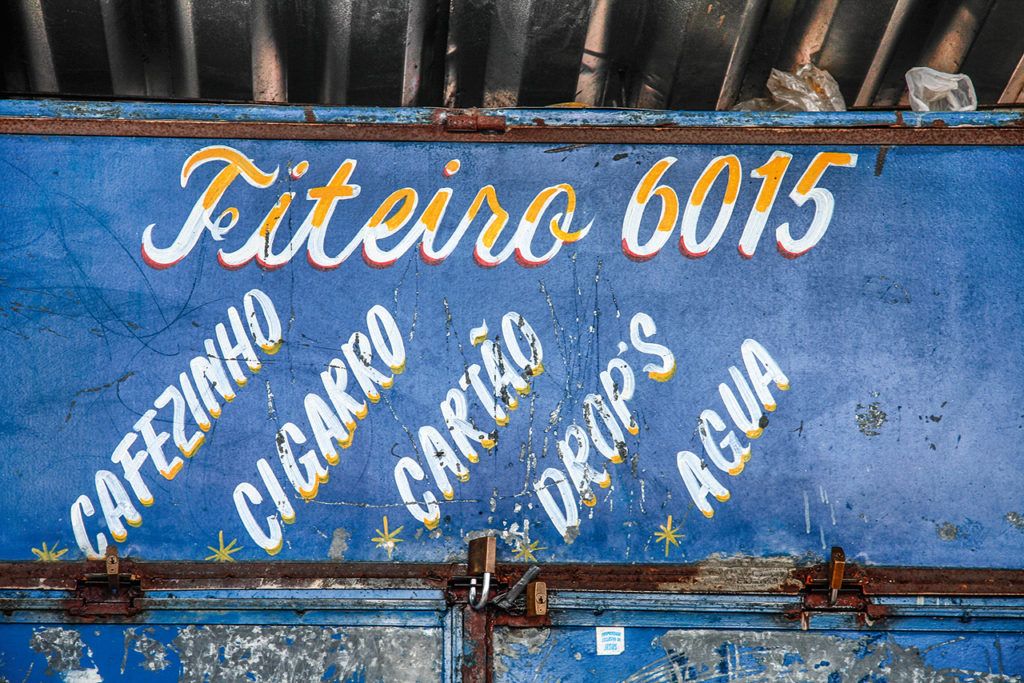 Commercial stall photographed near Casa Amarela Market, Recife, 2009. However, since the end of the twentieth century, the rise of digital printing technology has impacted the lives of the local sign painters, whose hand-crafted work has been progressively replaced by these machines. (This is, of course, a global phenomenon.) This was the motivation behind the creation of the Abridores de Letras de Pernambuco [Sign Painters of Pernambuco] research project.
Urban Vernacular Typography
It all started in 2008, when I applied for my master’s degree on the Postgraduate Design Program at the Federal University of Pernambuco, and began investigating the typographic styles of Recife's vernacular lettering as a part of the Graphic Memory Studies unit.
This initial stage of the investigation resulted in an image bank of more than 200 photos of vernacular lettering, and a typographic classification resulting from a meticulous graphic analysis of these. These research findings were published in 2010 in the book Tipografia Vernacular Urbana - uma Análise dos Letreiramentos Populares [Urban Vernacular Typography - an Analysis of Vernacular Lettering].
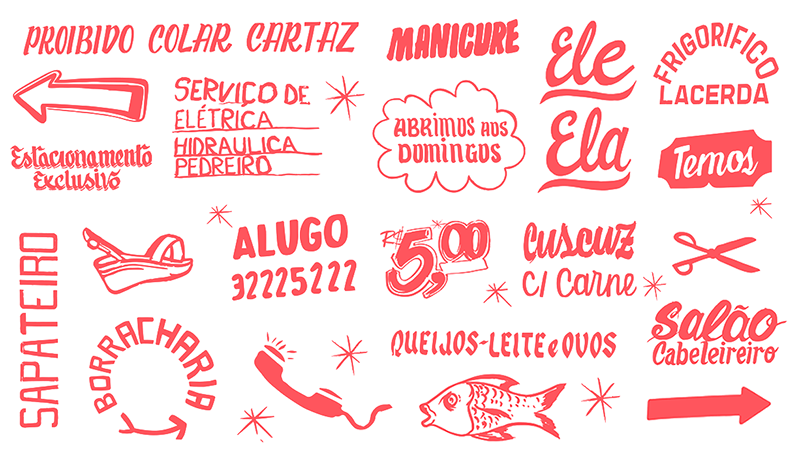 A variety of symbols and letters from the sign painters of Pernambuco, Brazil. Image: Fátima Finizola, 2013. Enter the Sign Painters
After I finished my master's course, I wanted to continue this line of study, and to seek out the remaining local sign painters. I wanted to learn more about their processes, materials and typographic choices, rather than just theorising with the use of photographic records.
Thus, when I initiated my doctoral studies in 2010, supervised by Solange Coutinho, I decided to broaden the research approach and include an investigation into the protagonists of this craft. This led me to drawing up a brief historical survey regarding the origins of this activity across the region, building on the earlier typographic analysis. This represented a big turning point in my research.
In this new phase, the geographical scope was also expanded. The final analysis included artefacts from commercial vernacular communications produced by professional sign painters in six cities across the state of Pernambuco: Arcoverde, Caruaru, Gravatá, Petrolina, Recife, and Salgueiro.
By the end of the field research we had interviewed 12 practising sign painters in these locations, and collected a new sample of almost 1,000 photographs. Approaching these craftsmen enabled us to discover more about their lifestyle, their apprenticeship processes, and the techniques they used on a daily basis. A new typographic vocabulary was also composed based on the terms used by the sign painters to describe their own aesthetic styles and materials.
Sign painter Freq with sign kit and at work on a sign advertising land for sale, Caruaru, Pernambuco. Photos: Damião Santana. Throughout this journey from the coastline through to the hinterlands of Pernambuco, conducted in partnership with the designer and photographer Damião Santana, we encountered many talented people. In Recife we discovered the paper signs painted by Laércio in a local supermarket, the shop window and wind shield advertisements painted by Ely Natividade, and the work of the artist Carioca, who paints on a variety of substrates.
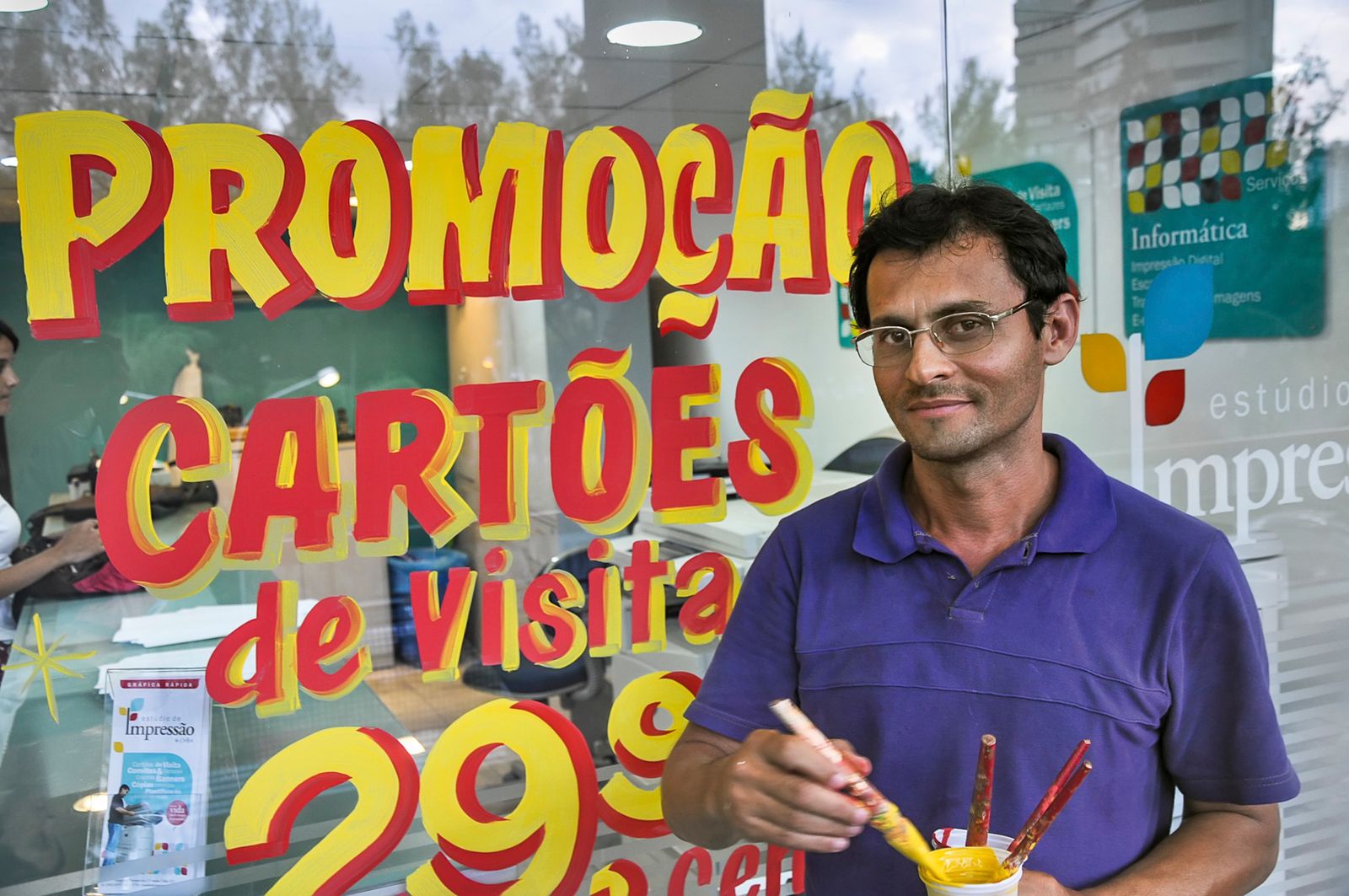 Window splash by Ely Natividade in progress in Recife. 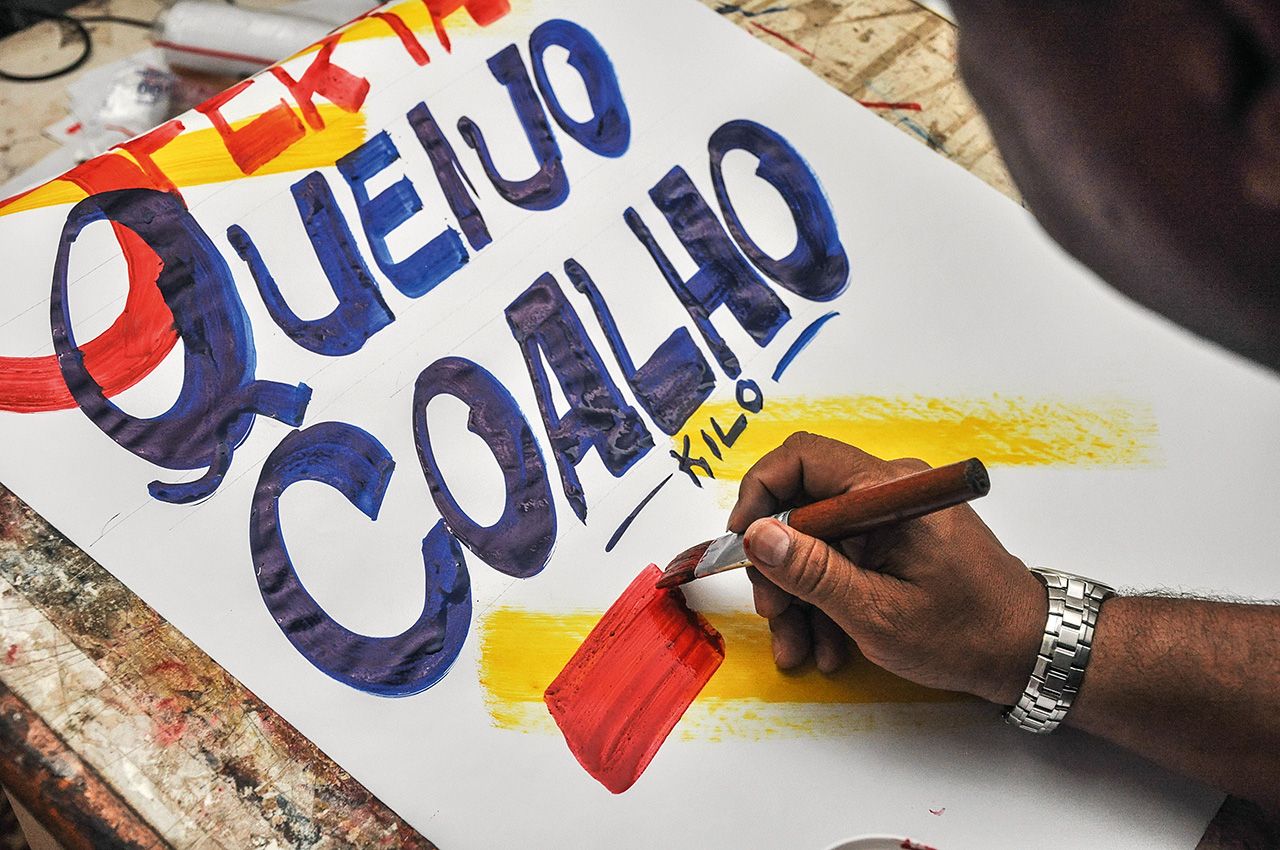 Poster being painted by Laércio at Astral Supermarket, Recife and Moreno. In Caruaru, we encountered the painter Freq (in memoriam), his customized commercial signs, and his apprentice Marcos who specialises in making decorative mud flaps for trucks. These are recognisable through their characteristic painted landscapes and degradê [gradient] letters.
In Salgueiro we discovered the painter Moisés and his technique of painting signs with a compressor instead of the traditional brushes. In Petrolina we met the painter Zé Moura, one of the last craftsmen from a family of traditional sign painters, along with the beautiful showcards made by Genivaldo, to mention but a few examples.
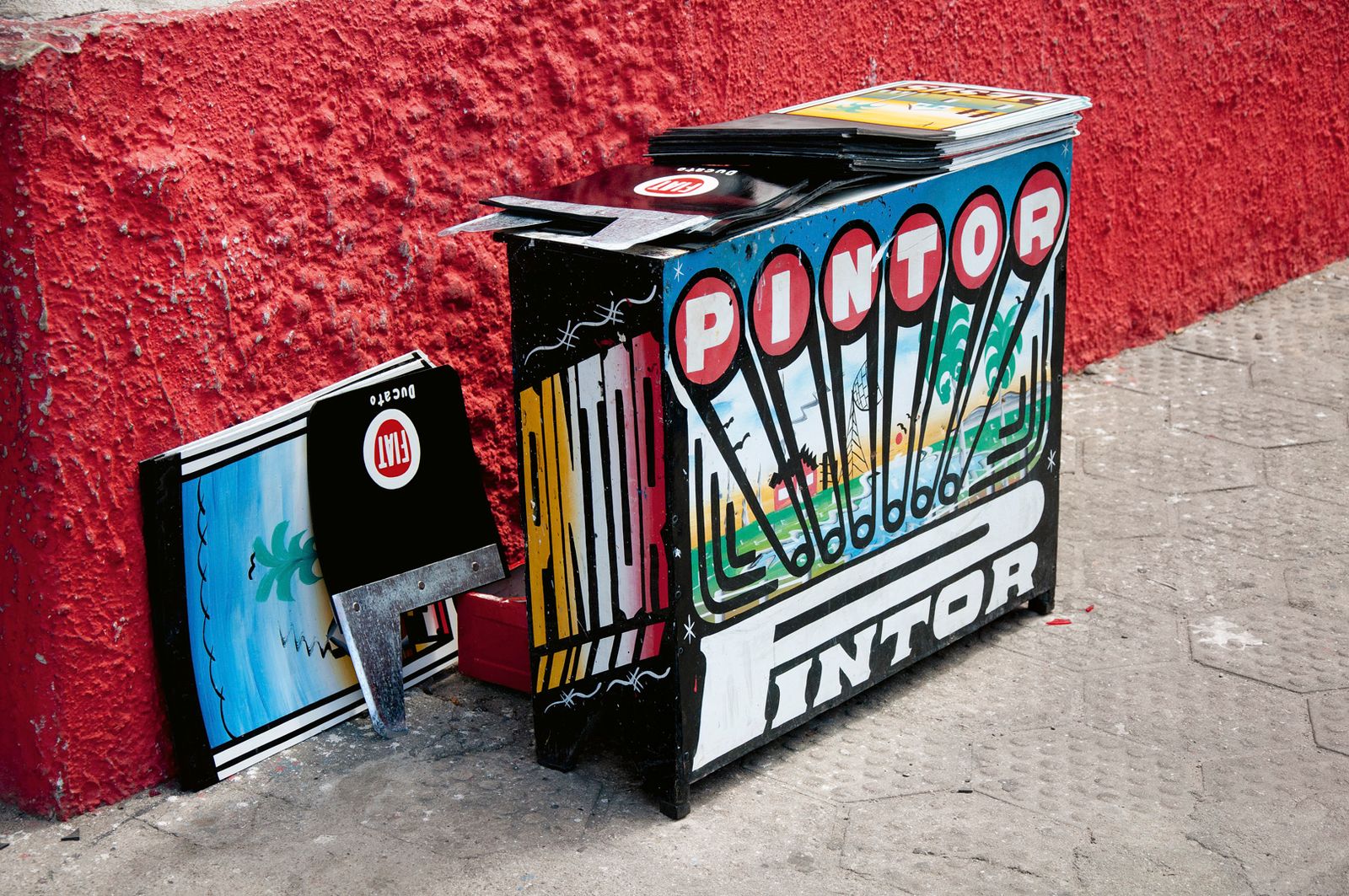 Kit box/stool belonging to the sign painter Marcos in Caruaru, Pernambuco. Photo: Damião Santana.  Mud Flaps painted by Marcos in Caruaru, Pernambuco. Photo: Damião Santana. Recognising the Craft
It is important to note that in recent decades, the activity of sign painting in Brazil has been generally considered a minor practice, carried out by people who have no access to formal education in the field of design, and who come from the lower classes. These professionals are mainly self-taught, or have learned the craft as apprentices of more experienced painters. Most of them believe that their skills are 'a gift from God'.
Those that we interviewed were aged between 30 to 65, and exclusively men; we didn't come across a single woman working as a sign painter in the cities we visited. They were all very honoured to take part in the project, and to have their craft recognized by the academy. The painter Sebastião was particularly moved by our visit, as he had hoped that one day someone would come to document his work before it disappeared, just as is done with the work of traditional photographers and watchmakers.
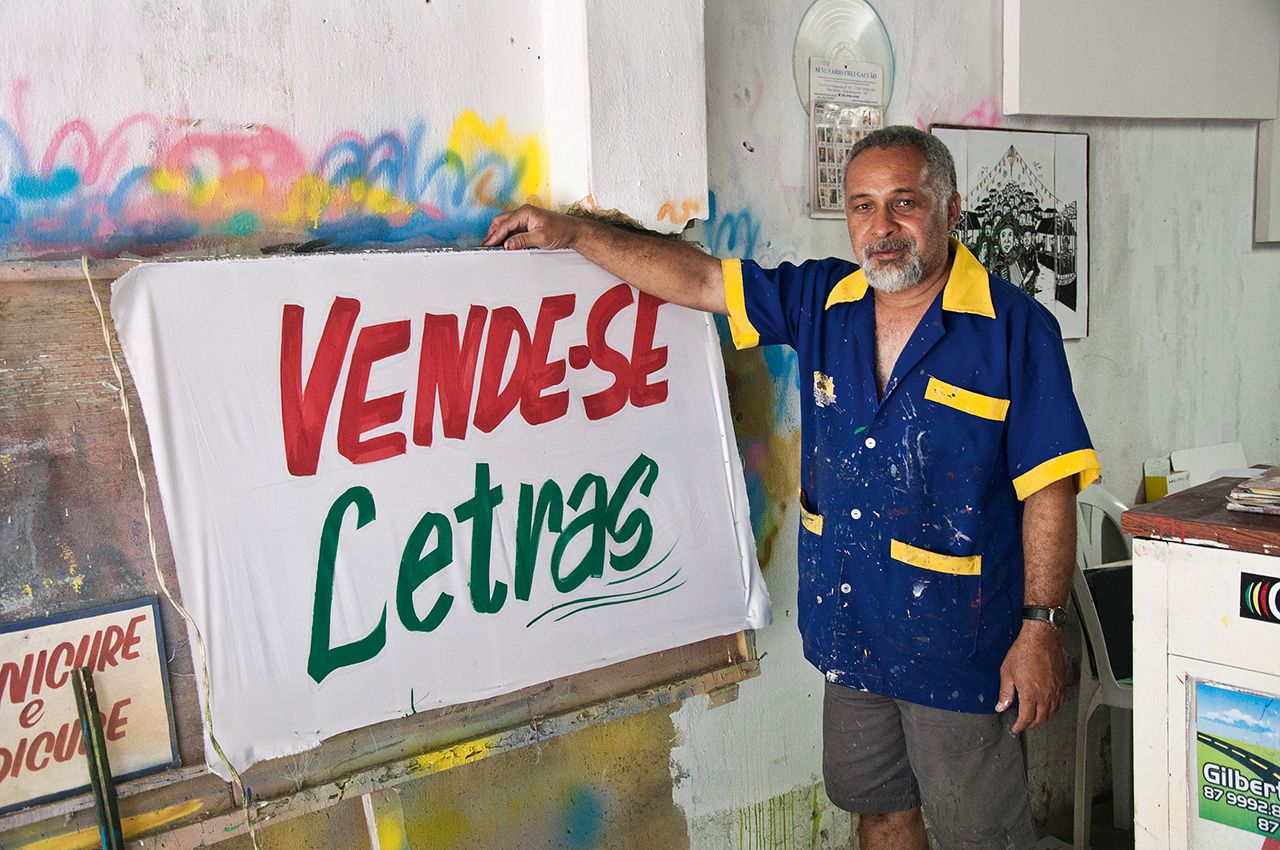 Sebastião at his easel in Arcoverde. The results of the field research were published in 2013 in the book Abridores de Letras de Pernambuco [Sign Painters of Pernambuco], with the support of local government funding: FUNCULTURA. The complete thesis was finished in 2015, and included a new typographic analysis. It's initial historic investigation into the beginnings of sign painting practices in the state was accompanied by the presentation of Pernambuco's contemporary sign painters.
 Abridores de Letras de Pernambuco. Photo: Damião Santana. Looking Back
October 2023 marks ten years since the book was published. One decade on, it is interesting to revisit the studies, observe the current panorama of this craft in Pernambuco, and the impact the research has had in this field.
We have noticed that traditional hand-painted signs continue to disappear from the urban environment in cities such as Recife, where development has been more rapid. Some professionals, specialising in niches such as paper signs, still manage to survive in the current market but, generally speaking, there most opportunities are now found outside of the commercial centres, or in smaller towns in the more isolated parts of the state.
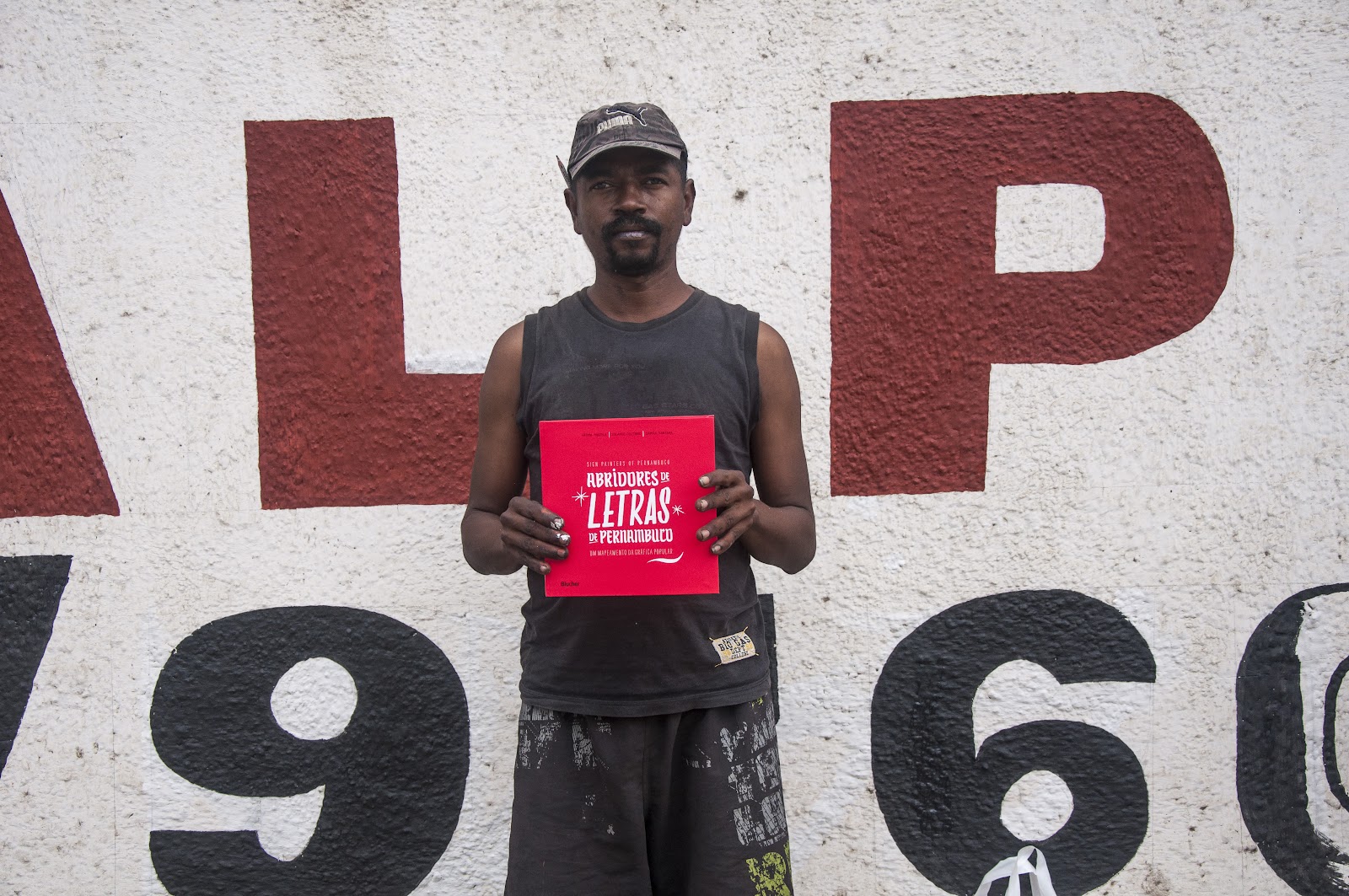 Sign painter Carlos with the book Abridores de Letras de Pernambuco. Photo: Damião Santana. However, in a broader context, the project highlighted the culture of vernacular sign painting and 'grafica popular', as well as other research carried out in Latin America since the early 2000s. These studies of sign painting culture through academic and cultural initiatives have given a voice to the protagonists of this craft—the Abridores de Letras [sign painters], and inspired a new generation of young artists, craftspeople, and designers, not necessarily from 'popular' contexts. They have been encouraged to dedicate time to learning more about this craft, and transforming it into a professional activity.
The dissemination of this research on the internet and social media has also echoed within the context of formal design. In Pernambuco, and throughout Brazil, the vernacular aesthetic that figured in the local sign painters' work continues to be used as a way of bringing a sense of 'local identity' to various different advertising campaigns. This practice can be problematic, since just a few projects have the genuine intention to be developed in a collaborative manner with the local sign painters, or at least in recognising their authorship.
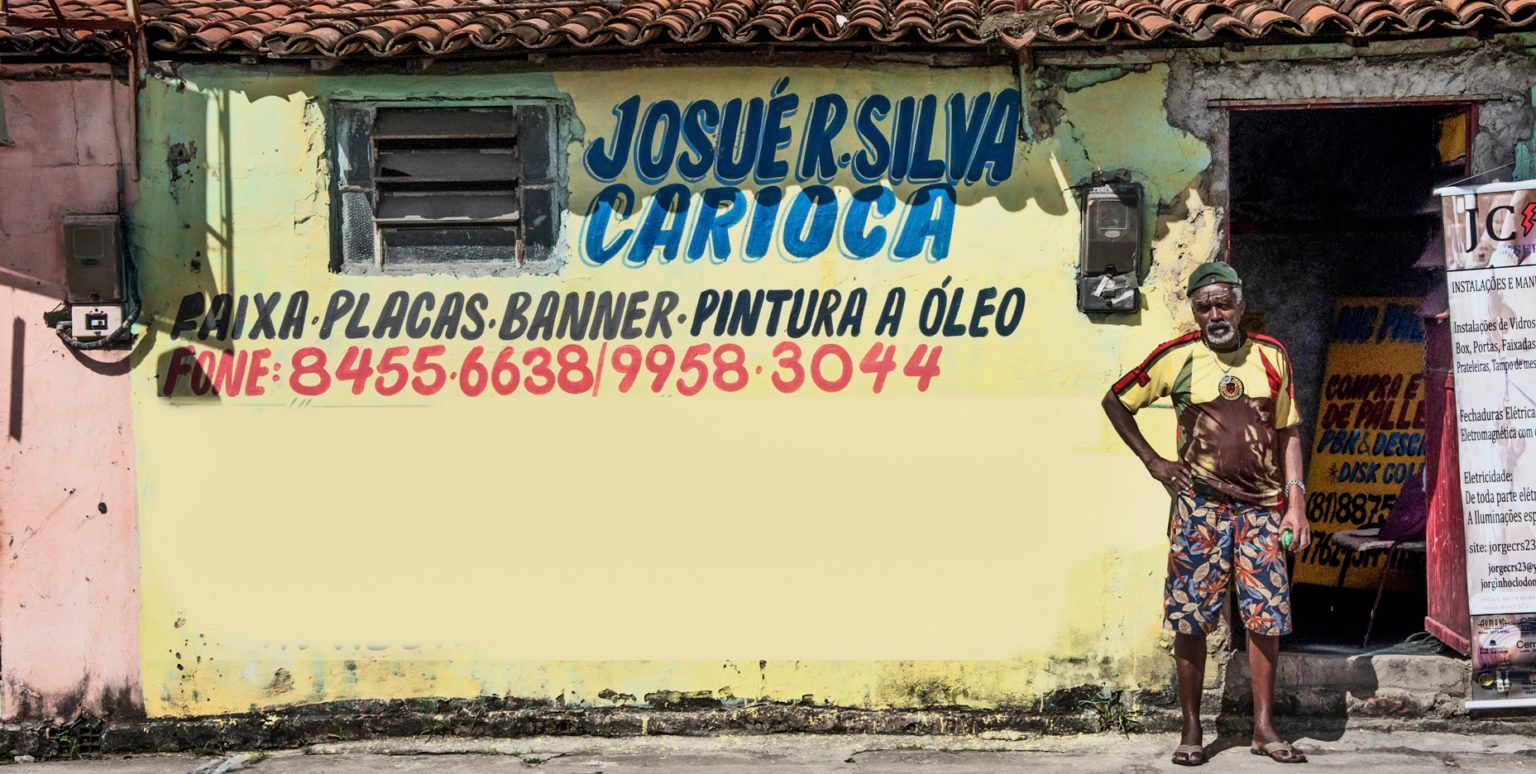 Josué Rogaciano, aka Carioca, at his workshop in Recife. Controversy aside, the renewed interest in vernacular sign painting is here to stay, whether through graphic memory studies that investigate the letters in the urban environment, or as a source of inspiration in the field of graphic design. The work of these original craftsmen can be remixed within formal design projects, or reinvented by a new generation of artists.
The Abridores de Letras de Pernambuco project set out to recognise sign painting's contribution to the history of local graphic design. Through its outputs of two books, academic articles, and several exhibitions, it has followed this mission to confer value on this craft and its protagonists.
The project continues to live online via the dedicated website, which includes the published collection of photos, and the accompanying Instagram account @abridores_de_letras. Work is also underway on the second edition of the book, so stay tuned for good news to follow.
Written by Fátima Finizola / @fafilete
Fátima Finizola is a graphic designer and researcher in the area of vernacular design, typography and graphic memory. Adjunct Professor of the Design Course at Federal University of Pernambuco - UFPE, Campus do Agreste. PhD and Master’s degree in design through Post Graduate Program Design at UFPE. Founding partner of Corisco Design. A member of the board of ADG Brasil between 2009-2013.
|
